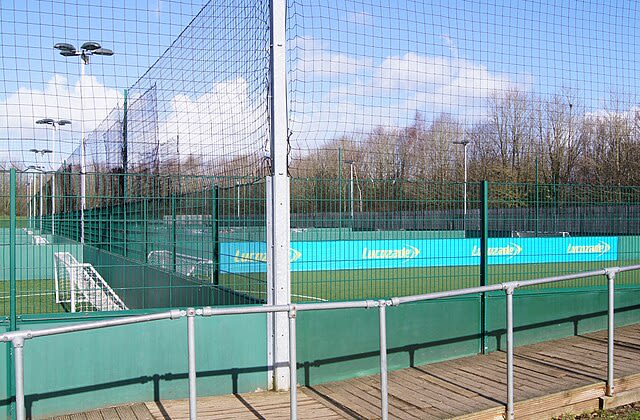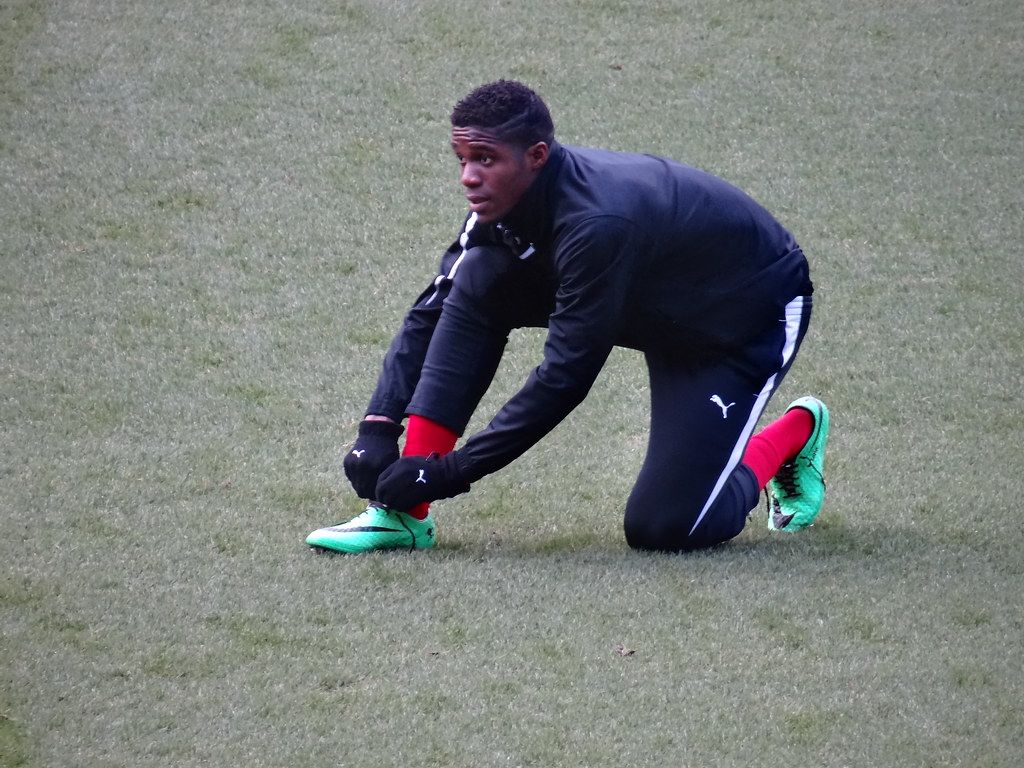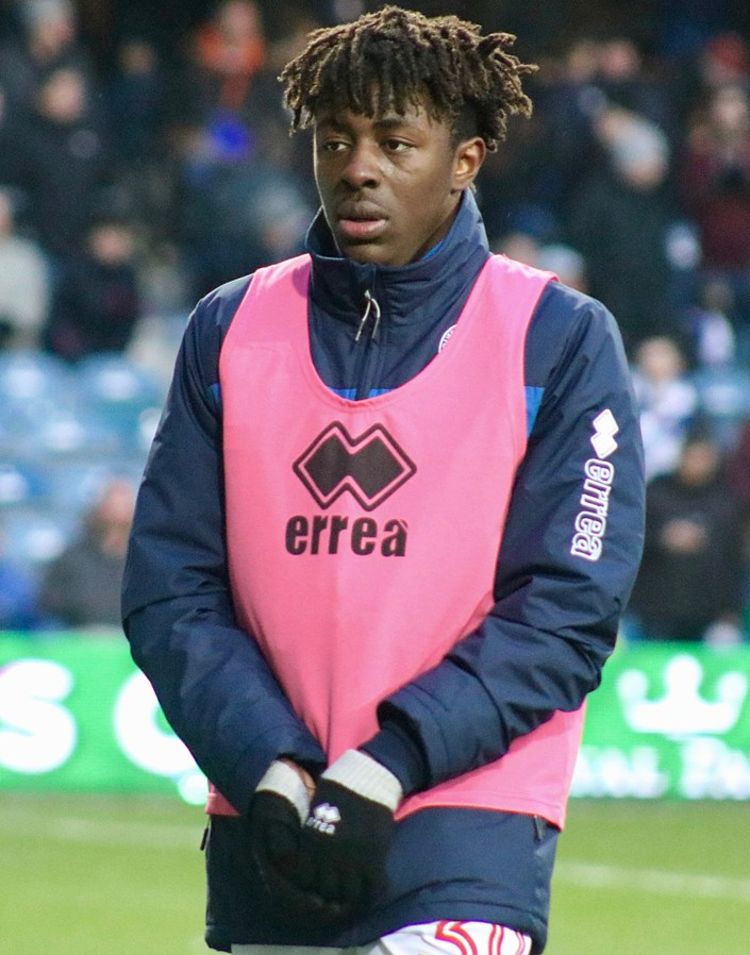Cage football: The pride of football in London and its need to be protected
By Nathan Edwards
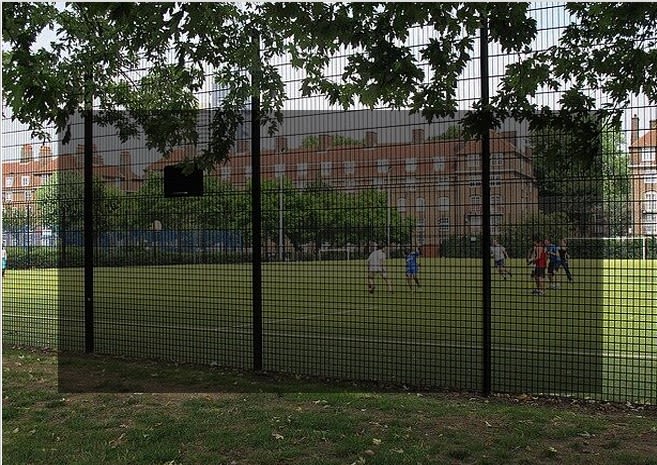

Jadon Sancho, Eberechi Eze, Callum Hudson-Odoi and Wilfried Zaha have all had different journeys in their professional careers. Still, the time they spent playing football during their youth was in a very similar setting in south London.
The cage.
The cage is a ruthless, unforgiving place. Often found embedded deep into London's working-class communities. The concrete floor enclosed by metal fences has birthed some of England's most exciting talent in recent years.
Six of the 25 players called up by England in November 2023 came from the capital or the surrounding areas and were regularly found playing football in the cage when they were younger.
Marc Guehi, Fikayo Tomori, Ezri Konsa, Declan Rice, Conor Gallagher and Bukayo Saka were the six.
Football journalist Henry Winter believes it isn't just the football that makes cage football such a great development ground for young footballers.
Winter said: "The number of players I have spoken to who have said that they grew up playing in cages, developing that skill and then being picked up by a grassroots team.
"It is a confluence of social changes, economic pressure for the desire to go make money and achieve with a passion for football that you would find in these cages in south London.
"North London is good but south London you would get quite the team from.
"They would play with their older brother and his mates. They would be slamming them across the wall and they sort of had to develop their technique to get out of the way and also be physically robust enough to cope with it.
"If you look at the way the modern game has developed, dealing with the ball in tight spaces and evading the press. Phil Foden, he is from Stockport, but he is a classic player of this and he plays like there is almost a collection of cages across the pitch. That is also the case with the south London boys.
"The cage is the liberating part of their life."
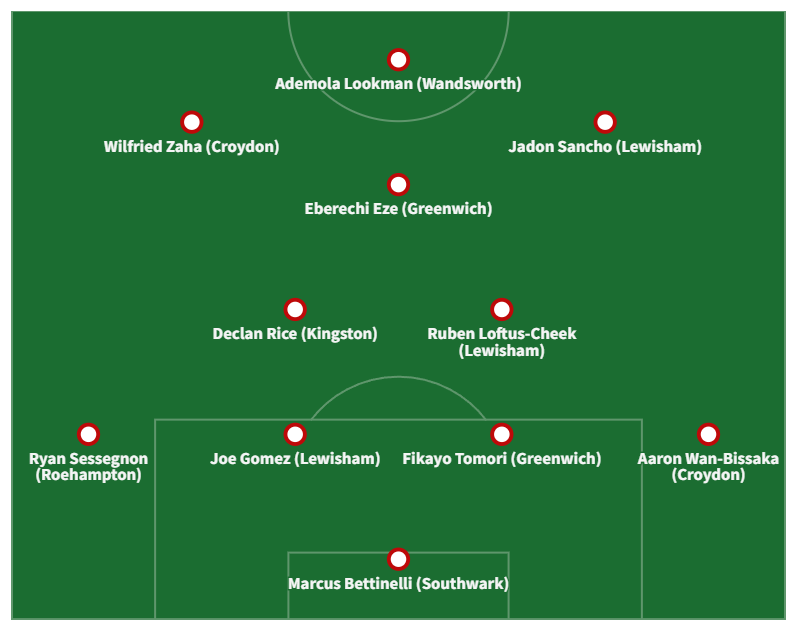
South London football XI
South London football XI
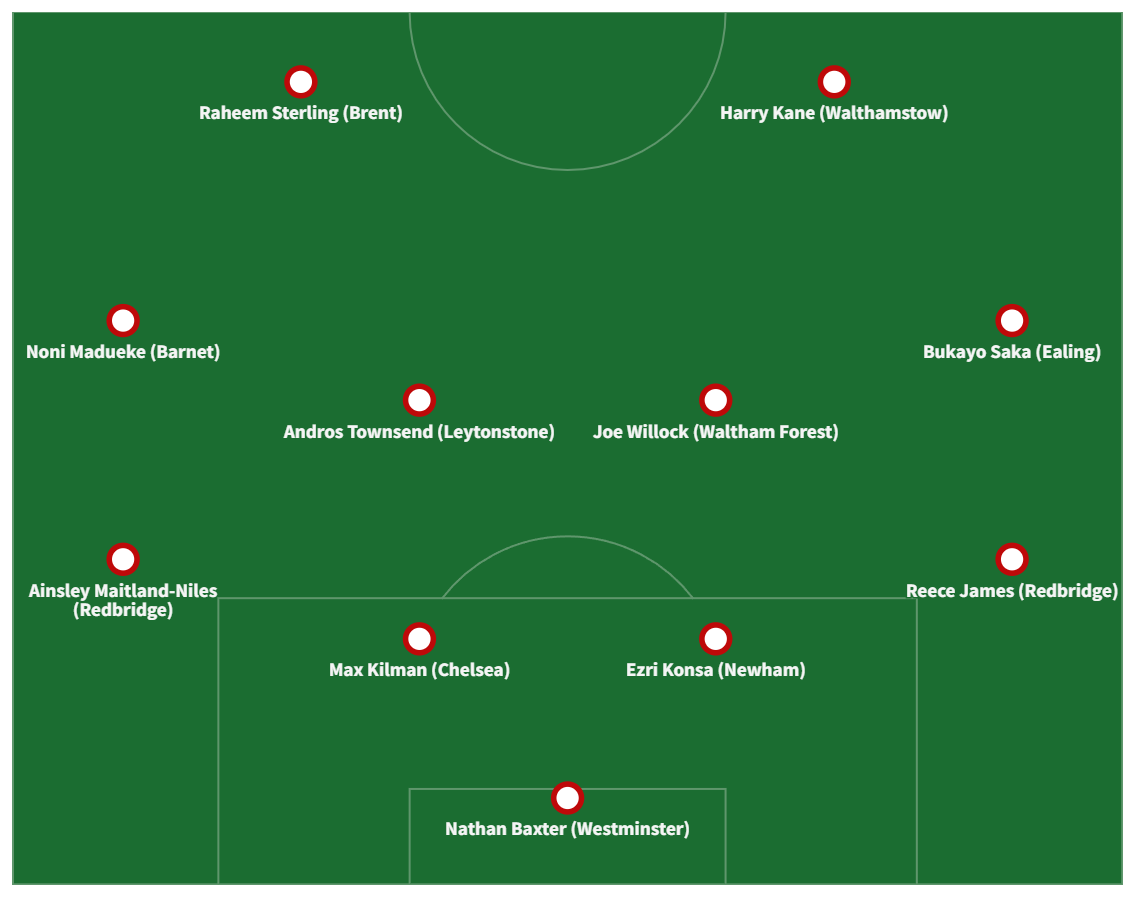
The rest of London XI
The rest of London XI
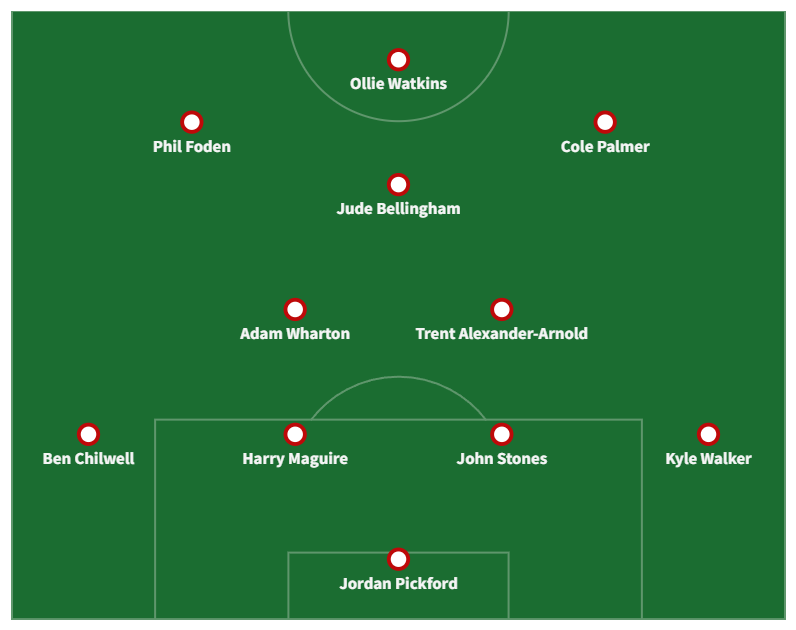
The rest of England XI
The rest of England XI
"The cage is the liberating part of their life."
Henry Winter, SJA award-winning sports journalist
Photo credit: Stephen Craven
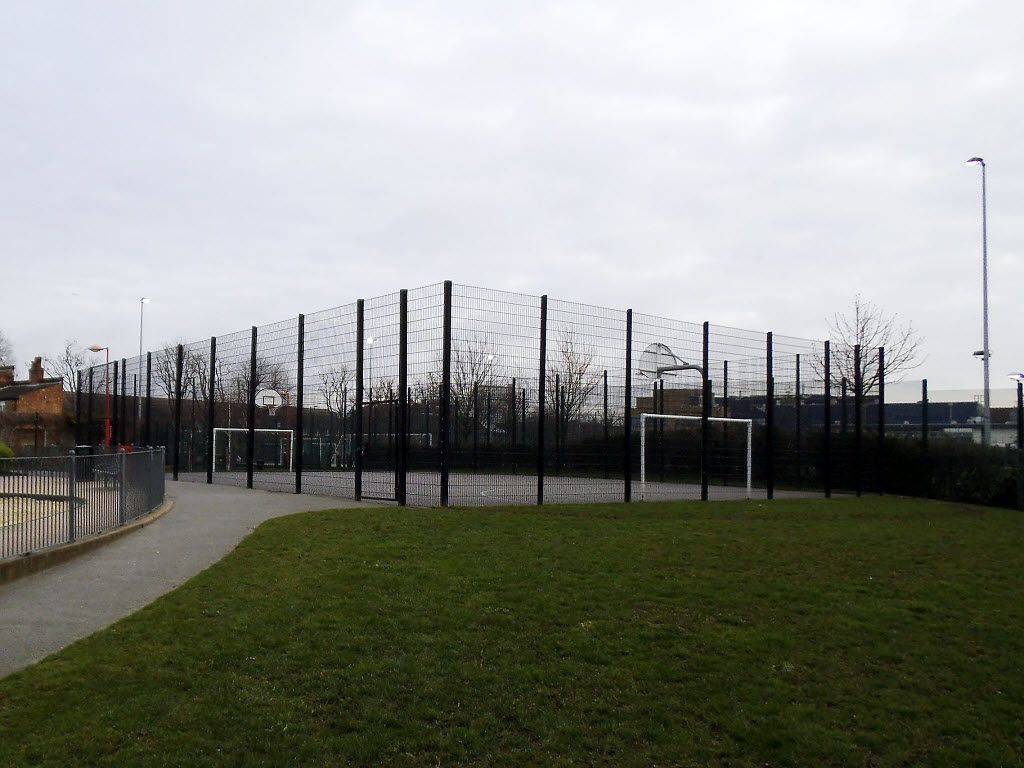
It was in these small 5-a-side pitches, often combined with a basketball court, that young children could express themselves, away from coaching, against their friends, their siblings and their siblings’ friends.
There was a freedom to beat a player in a creative way, evade tight areas with tricky skills and produce precise finishing in the smaller goals.
The environment creates incredible habits that can then be carried through into other styles of football, whether that be in a Saturday league, non-league or the professional game.
Kieran Squire talking about a new youth product that West Brom's academy has picked up after predominantly playing cage football.
Kieran Squire talking about a new youth product that West Brom's academy has picked up after predominantly playing cage football.
Kieran Squire has worked across multiple academies across the West Midlands and has seen footballers football excel at different academies due to the techniques learnt in the cage.
He said: “Cage football is something I looked at, especially in south London, and the players there play with so much freedom.
"The under-the-microscope things such as technical key capabilities and the physical outputs are really visible to see. You can't quantify the way they play. It is survival of the fittest and everyone is a different age.
"If you are playing someone older they would be physically more aggressive with you and there are no referees or organisation, it is playing with freedom.
"You have to learn how to deal with the physicality, in terms of the body checks, the clashes into the wall and protecting yourself.
"There are so many physical and mental outputs that you wouldn't get in more traditional football and it is something that I have looked to introduce into academy football."
While at Walsall his academy teams would play in cage football tournaments, which helped boost the squad's fitness as the ball was constantly in play, resulting in little rest time when playing.
Now at West Brom, where he is a lead age group coach, he is taking his teams to play in a beach football tournament, with the aim to expose the players to different styles and techniques needed in the game.
Squire has dealt with many young athletes in the West Midlands, and the skills acquired are universal, with academies keen to refine the raw talent they nurtured on the street to make them more suitable for the elite game.
Ademola Lookman is another example of a footballer who almost exclusively played football in a recreational capacity until he was picked up by Charlton’s academy at the age of 16 and has since made appearances in the Premier League, Bundesliga and Serie A.
Steve Avory is the academy director at the Addicks and he was in charge of helping the Wandsworth local develop to become suited to academy life.
He said: “A lot of the footballers coming through in London, including Ademola [Lookman], played recreational football within the inner city in places they call the cages.
“They go in there and organise a game between themselves, and Ademola was doing a lot of that.
"He had talent on the ball and the technical side is what attracts you to players, but he was lacking the tactical side of the game and he had a lot of things to learn in that sense.
“We tried to make sure we never knocked out of him was that wonderful natural ability he had on the ball and you allow him to make those free-spirit decisions.”
Lookman descends from Nigerian roots, and he along with many other people have made London’s footballing scene so unique compared to other UK cities, as the capital has become a melting pot of different nationalities.
In Stockwell there is a large community of Brazilians who now live in the capital, Lambeth and Merton are home to many South Africans who emigrated here and Brixton is where lots of Ghanaians now live.
And that multiculturalism is the same on the football pitch. Jamie Pollitt is the co-founder and director of Rising Ballers, a football media business that highlights exciting prospects in the game.
Due to the success of the brand, Pollitt, Eni and Brendan Shabani created a football club that has given aspiring young people a chance to find a path back into football, such as Iliman Ndiaye, who now plays for Marseille.
Pollitt is from west London and has been gripped with football his whole life. He has experienced the different cultures found within the sport in the capital
London's non-UK born population by country of birth (2020). Date by Trust for London.
He said: “The culture in London is different. Football is like a religion here. Every young kid grows up worshipping the best players, so culture is a massive part of it.
“Also, the fact that London is so multicultural plays a huge role. We have had so many influences come over to this city and the diversity in the England team shows that.
“It is a melting pot of different players, I will go to cages in south London and there will be a group of Brazilian kids playing football.
“You don’t get that access in other more rural areas, where you can play with Brazilian kids, Spanish kids and African kids.
“Growing up in difficult urban areas of London really requires a thick skin and it breeds tenacity that a footballer needs to survive to be successful in the game.”
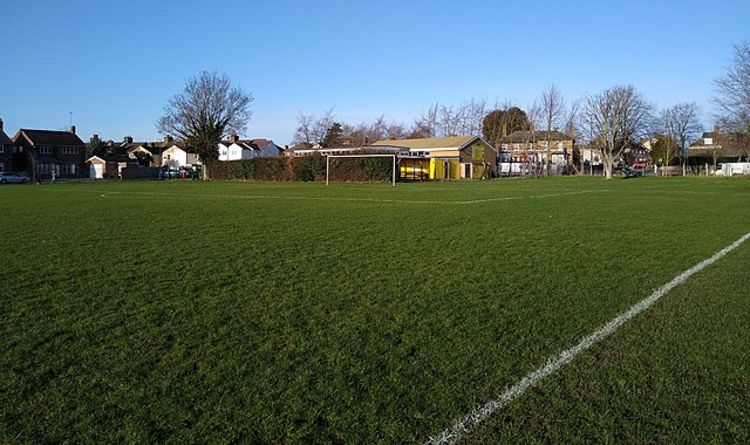
Footballers who grew up playing cage football.
Eberechi Eze (Forward, Crystal Palace and England)
The cage was where he spent most of his time when he wasn't at an academy or school.
He said to the BBC: "I think growing up in London, with all the cages, everyone thrives off of the nutmeg or that skill; that's what you want to do. Being able to have the opportunity to do it in the Premier League for me is great."

Photo credit: Вячеслав Евдокимов
Photo credit: Вячеслав Евдокимов
Jadon Sancho (Forward, Borussia Dortmund & England)
Self-expression is the only way to grab the attention and respect of those watching.
And Jadon Sancho has been doing that long before he made it as a professional footballer. He started playing in the cage at the age of seven and quickly impressed with his arrogance and flair on the ball.

Photo credit: Mohammad Amin Ansari
Photo credit: Mohammad Amin Ansari
Callum Hudson-Odoi (Forward, Nottingham Forest & England)
"When I was young, I used to play cage football a lot, kick around in the streets, no matter where, wherever, just to make sure I was kicking a ball, doing something with a ball," he said in 2019.
Hudson-Odoi struggled at times after an Achilles injury but he has started to find his form at Nottingham Forest, playing with a no fear attitude something he picked up when playing recreationally.
But for most who go to the cage, it isn’t just about football. There is a larger dream and hope to use their passion to make it out of the deprived communities they live in.
Darius Johnson grew up on a Chelsea estate and made the switch to becoming a professional at the age of 19, after teaching himself in the cage.
Rising Baller's Pollitt said: “His story is really special, he was the first player from Rising Ballers to make it into the pro game.
"He is from a council estate and everyone in the area was talking about him. He just looked like a footballer and it was astounding that he wasn't at a club."
He caught the eyes of Chelsea's scouts when playing for Rising Ballers and eventually ended up playing in the Eredivisie.
It all stemmed from the cage and grassroots football but what may have been on offer to the 24-year-old isn’t necessarily available to young Londoners today.
The city is home to 16% of the UK population but only has 8% of its playing fields and the ever-increasing growth in pay-to-use football areas is affecting the opportunity for children to stay active.
Winter said: “All over London there is an issue where there is not enough playing fields and I have been a campaigner in inverted commas for the public schools in London to open up their facilities to local kids.
“Westminster and St. Pauls have phenomenal facilities and I think they have a moral duty to open them up to, particularly when the government are building on a lot of playing fields.
“I grew up on Wandsworth Flats on the public pitches and if they are being handed over to be houses, and I understand the housing crisis, we still need the parks, green places to develop for their health and the long-term significance of football in this country.”
Ademola Lookman's story from the cages to an AFCON final
Darius Johnson's story with Rising Ballers and beyond.
With cage football, the London FA set up an initiative called Play Zones which gives people an opportunity to rent out an area, that used to be a rundown pitch or cage, to play football for a subsidised fee.
It is a huge improvement, compared to the £65-£105 charge to rent a Power League football pitch across London, but the city’s FA have struggled to offer free guaranteed opportunities to play football.
London FA’s CEO Paul Bickerton said: “It is a huge concern and what we are seeing the most is the squeeze on local authorities and what that means is they cut back on the investment in facilities and activities that aren’t their statutory responsibility.
“It is very difficult for everybody and I mean we do subsidised work but we are a small not-for-profit business and I think that is why we are going down the path of generating commercial from the private sector with their CSR to invest in these activities.
“Everyone thinks there is a lot of money in football but there is a lack of money lower down compared to the top level.”
The lack of funding that is available to the London FA to set up these free-to-use areas has seen footballers give back and set up areas that people can use.
Sancho created a pitch in collaboration with Nike in his home borough of Lambeth and Zaha founded an academy called the Wilfried Zaha Academy in the hope of giving young children the chance to achieve their dream.
Because Zaha, Sancho and co only had a ball and a cage at times, but that was enough.
